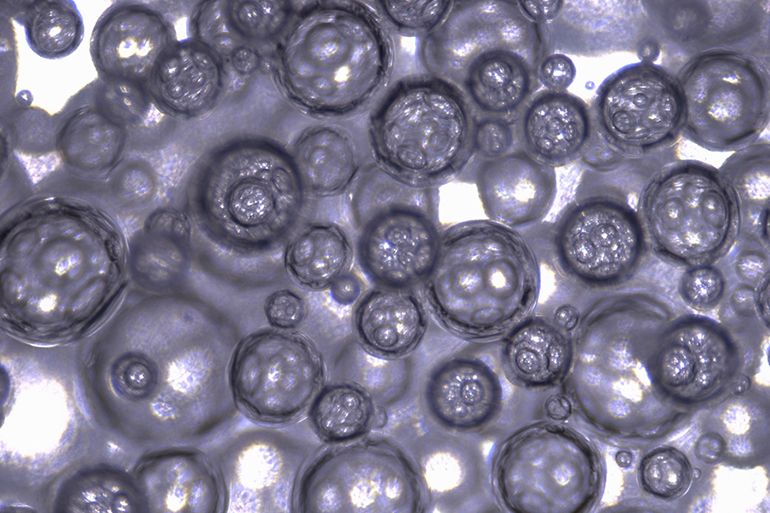Researchers at MIT have created a carbon monoxide-loaded foam intended for therapeutic use against inflammatory disease. While the gas is toxic if inhaled in large quantities, in small doses it has potent anti-inflammatory effects. However, delivering it to the gastrointestinal tract to treat inflammatory diseases, such as colitis, is a challenge. In response, these researchers emulated the edible foams available at high-end restaurants and loaded them with small amounts of carbon monoxide. The foam can be eaten or delivered rectally, and in preliminary studies in rodents the delivery technology showed therapeutic efficacy in a variety of inflammatory disease models.
Carbon monoxide is typically considered a hazardous gas. Its ability to bind to hemoglobin in the blood prevents red blood cells from carrying oxygen, and in high doses it can lead to death. However, the therapeutic properties of the gas are less well known. It has significant anti-inflammatory effects at low doses, and has shown therapeutic potential in reducing transplant rejection and in reducing inflammation in a variety of conditions including gastrointestinal disorders.
However, the toxic potential of the gas would understandably make patients and clinicians wary of using it. To address this, these researchers turned to an unlikely source of inspiration – high-end restaurants. Such establishments have been known to serve flavored foam to wealthy diners, and these researchers turned to this “food” as a means to deliver the gas to the GI tract.
“The ability to deliver a gas opens up whole new opportunities of how we think of therapeutics. We generally don’t think of a gas as a therapeutic that you would take orally (or that could be administered rectally), so this offers an exciting new way to think about how we can help patients,” said Giovanni Traverso, one of the creators of the new hybrid material.

The researchers made the foams using edible ingredients, including methyl cellulose, alginate, and maltodextrin. Cleverly, they were able to fine-tune the release properties of the gas-loaded foam by altering the amount of included Xantham gum, which also acted as a stabilizer. Finally, they used a specialized siphon to add the CO gas to the foam.
So far, the researchers tested the foam in its ability to treat various inflammatory conditions in rodents. For instance, they investigated it in the context of acetaminophen overdose in mice, which results in liver damage. When delivered rectally, the gas in the foam reached the liver and significantly reduced the liver damage and inflammation.
Study in Science Translational Medicine: Delivery of therapeutic carbon monoxide by gas-entrapping materials
Via: WITH
